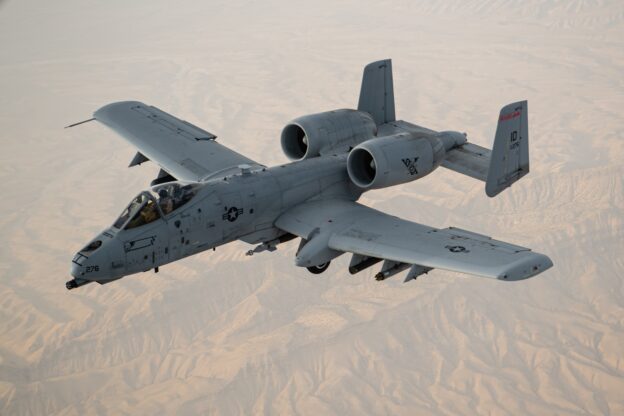The A-10C Thunderbolt II is the first Air Force aircraft specially designed for close air support of ground forces. They are simple, effective and survivable twin-engine jet aircraft that can be used against light maritime attack aircraft and all ground targets, including tanks and other armored vehicles.
The A-10C offers excellent maneuverability at low airspeeds and altitude while maintaining a highly accurate weapons-delivery platform. They can loiter near battle areas for extended periods of time, are capable of austere landings and operate under 1,000-foot ceilings (303.3 meters) with 1.5-mile (2.4 kilometers) visibility. Additionally, with the capability of carrying precision guided munitions and unguided munitions, they can employ above, below and in the weather. Their wide combat radius and short takeoff and landing capability permit operations in and out of locations near front lines. Using night vision goggles, A-10C pilots can conduct their missions during darkness.
Thunderbolt IIs have Night Vision Imaging Systems (NVIS), goggle compatible single-seat cockpits forward of their wings, Helmet Mounted Cueing Systems, and a large bubble canopy which provides pilots all-around vision. The pilots are protected by titanium armor that also protects parts of the flight-control system. The redundant primary structural sections allow the aircraft to enjoy better survivability during close air support than previous aircraft.
The aircraft can survive direct hits from armor-piercing and high explosive projectiles up to 23mm. Their self-sealing fuel cells are protected by internal and external foam. Manual systems back up their redundant hydraulic flight-control systems. This permits pilots to fly and land when hydraulic power is lost.
Photo by Staff Sgt. Justin Parsons










